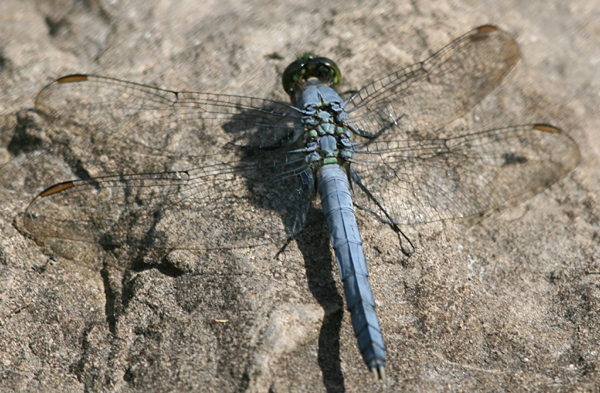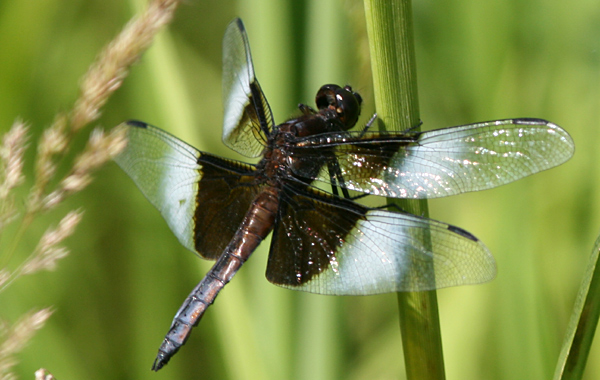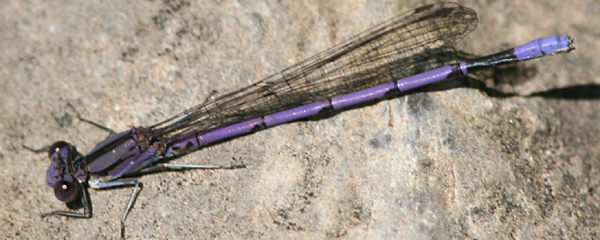My first birding excursion to Mendon Ponds, as reported earlier in the week, was an outstanding introduction to the abundant avifauna of my new stomping grounds. As a bonus, the bugs were pretty cool too. Every invertebrate seemed to be on the move but, like John at Born Again Bird Watcher, I was singing the Ode to the Odonata. What that means in English is that I was checking out dragonflies.
The first one I got a good look at was a grass green bug I’d admired many times before. A little research indicated that the object of my attention was a female Eastern Pondhawk (Erythemis simplicicollis), a fairly common dragonfly in those parts of the United States not ruled by the Western Pondhawk. How did I know the green one was a female? Because the male assumes a handsome powder blue veneer, like so:
Pondhawks are part of the Family Libellulidae, also known as the Common Skimmers. When I think of Libellula dragonflies, I always imagine the chunky ones with the dark wing patterns like the Common Whitetail. This last trip served up a similar skimmer flashing fancy dark patches on its wings but with a more modest abdomen. This, I learned, was a Widow Skimmer (Libellula luctuosa), marked as a male by the milky shading on its wings:
Plenty more glittering dragons buzzed by, a kaleidoscope of bejeweled bugs. One that I got great looks at was a most uncommon purple from tip to tail, or more appropriately, terminal abdominal appendages. This amethyst aerialist, a damselfly, was a Variable Dancer (Argia fumipennis), possibly even of the Violet Dancer subspecies. Apparently these delightful damsels are widespread but I’m sure I’d have remembered encountering so attractive an insect:














Terrific pictures of some of my favorite creatures.
Good ones! Never saw the Variable Dancer! Cheers, Klaus
That is one significant difference between NY and MN… I used to see TONS of dragonflies and damselflies in the Upstate area… Mendon, Conesus, the Bay, etc… but now I see far less of them. Maybe I am looking in the wrong places now.
Your dragonfly photos are great!
I enjoy their prevalence, now that birds are nest-setting and harder to find.
Makes a day at the pond very exciting!
Thanks all!
cas, I noticed some fine dragonfly photos from this region on your site as well. Any suggestions about where I should be enjoying nature in the Rochester area?
Thank you Mike!
There are a ton of oppurtunities for exploration in the Rochester area. I would suggest places such as the Bay, Slater Creek, the Lake Ontario shoreline (Webster Park, Braddock Bay Park), the Webster Arboretum, Mendon Park, Conesus Lake (or ANY of the finger lakes), Sodus Bay, Durand Eastman Park, Ellison Park… I could go on and on! Those places mentioned above though are some of my favorites!
The thing I miss the most is the sunsets off the Lake. Enjoy them as often as possible if you can. I will live vicariously through you.
Great dragonfly and damselfly photos, Mike. Around here in northern California, I’ve noticed the dragonflies just don’t sit still long enough for a shot. There’s a beautiful red one that I’ve had my eye on for quite some time.